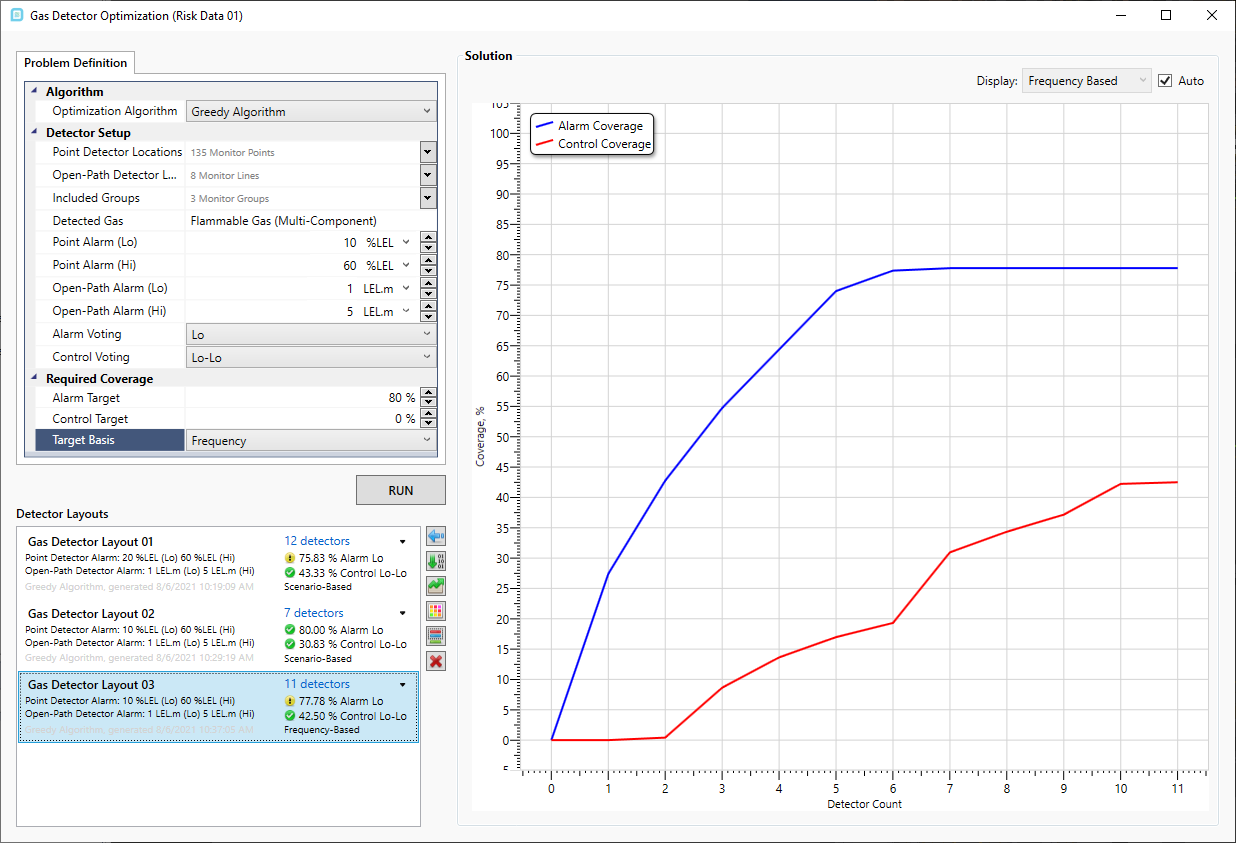Optimizing Based on Frequency Data
As it takes little time to run optimization cases, you can easily and quickly compare results for various alarm settings and coverage targets.
Using the criteria defined in the last section for Gas Detector Layout 02 - 10%LEL Point Alarm (Lo) and 1 LEL.m Open Path Alarm (Lo), etc. Except only change the Target Basis to Frequency and click Run.
Setting the target basis to frequency tells the Greedy algorithm to find a detector in a region with the highest frequency first, once added to the list the detected simulations are removed, and the process is repeated to place a detector in the next region with the highest frequency.

Tutorial 12 - Figure 17 - Resulting coverage for a target basis using frequency
Gas Detector Layout 03 also did not achieve the 80% coverage target. For this graph, the coverage factor can be thought of as the reduction in frequency of undetected leaks.
It can be seen that after 6 devices that the coverage target does not improve with the addition of more devices (horizontal blue line). It is typical for optimization to have the first few detectors provide a great deal of coverage and the latter devices only contribute a small amount.
For frequency optimization cases it is important to remember that the algorithm will look to detect the MOST frequent cases first, generally these are the smallest gas clouds. Since this does not take into account the size of the gas clouds (i.e. consequence, discussed in the next section) it will result in more devices being required for the same coverage target and may not detect larger gas clouds (which is accounted for when performing optimization with risk)..